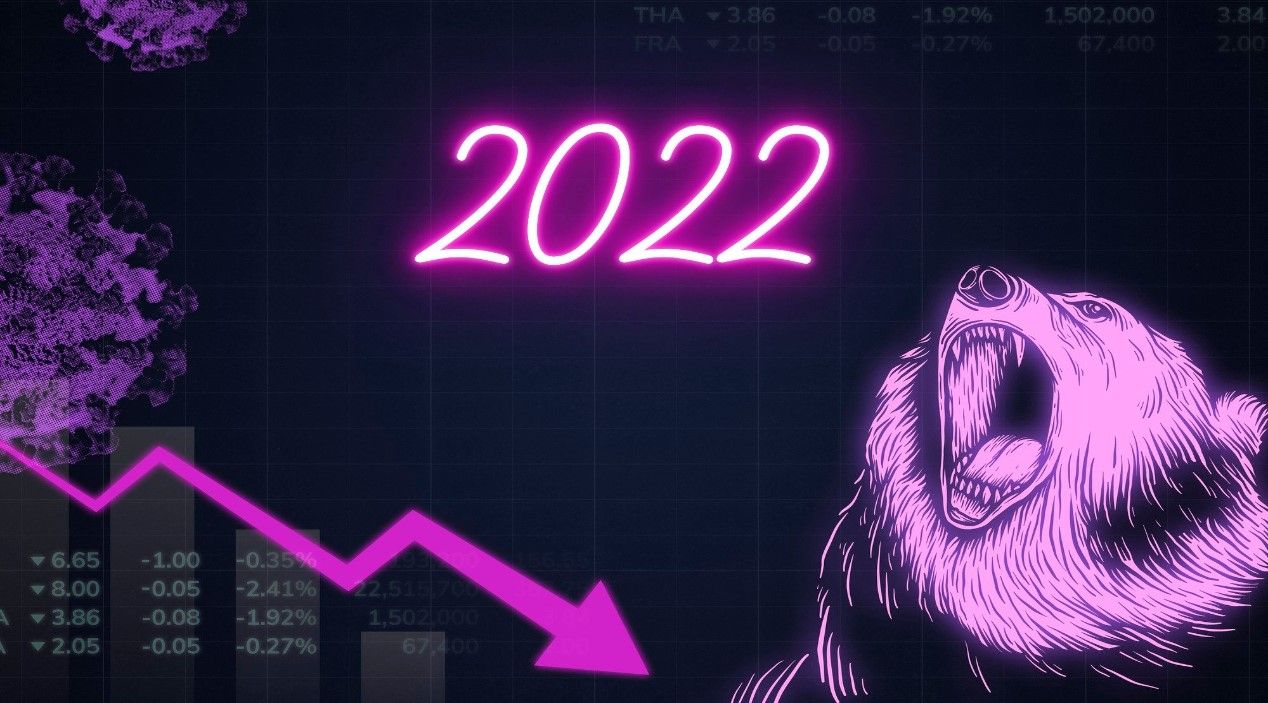Crypto Market Roundup 2022 - What Did We Learn?
The bear market of 2022 had a significant impact on the crypto market as a whole, with the overall market capitalization of cryptocurrencies falling from an all-time high of over $2 trillion in December 2022 to a low of around $800 billion in March 2022.

The past year has been tumultuous for the crypto market, with significant price fluctuations and high-profile events shaping the industry. 2022 has been a year of highs and lows, with a significant bear market following the bull run of the previous year.
As we reflect on the past year's events, it's important to understand the factors that contributed to the bear market and its impact on the market as a whole. In this article, we'll take a detailed look at the key factors that contributed to the bear market of 2022 and its impact on the crypto market.
Bear Market 2022: What Are The Causes?
The bear market of 2022 was characterized by a downward trend in the prices of cryptocurrencies, with Bitcoin, the largest and most well-known cryptocurrency, recording its lowest price since 2020. So what caused the bear market? There were a number of factors at play:
- The end of the bull market: The crypto market tends to follow a cycle of bull markets (periods of rising prices and positive market sentiment) and bear markets (periods of falling prices and declining market sentiment).
The bull market that began in 2019 lasted for approximately three years, which is roughly the average length of a bull market in the crypto space. It's not uncommon for a bear market to follow a bull market, as investors take profits and the market cools off. - Market manipulation: There have been instances of market manipulation in the crypto market, where individuals or groups have used tactics such as wash trading (the practice of buying and selling assets to create the appearance of greater trading volume) to artificially inflate the price of assets.
Wash trading is quite common with NFTs, and given that NFTs were important in the 2021/ early 2022 crypto run, these wash trades created several unsustainable bubbles that eventually burst, leading to a drop in prices. - Security concerns: The decentralized nature of cryptocurrencies means they are inherently more secure than traditional financial systems. However, there have been a number of high-profile hacks and scams in 2022, to the tune of over $3 billion, which led to a loss of confidence in DeFi, automatically affecting the market and causing a price decline.
- Market saturation: The crypto market has seen tremendous growth in recent years, with an increasing number of projects and tokens entering the market. This can lead to market saturation, where more assets are available than demand, leading to a price decline.
Catastrophic industry events: Terra Luna's crash, Celsius, and FTX
In addition to the broader market factors that contributed to the bear market of 2022, several specific industry events had a significant impact on the market. Here are a few examples:
- Terra Luna's crash: Terra is a stablecoin project that aims to create a decentralized financial system that is stable, transparent, and accessible to everyone. In May 2022, the value of Terra's LUNA token plummeted after a bug in the code was discovered that allowed a small group of individuals to create an unlimited supply of tokens. This caused a loss of confidence in the project and a significant drop in the price of LUNA.
- Celsius: Celsius is a crypto lending and borrowing platform that allows users to earn interest on their crypto assets and borrow against them. In June 2022, the company faced controversy after it was revealed that it had overstated the number of crypto assets it held and was experiencing liquidity issues. This caused a drop in the price of the company's CEL token and led to a loss of confidence in the project.
- FTX: FTX is a crypto derivatives exchange offering various futures, options, and spot trading products. In November 2022, a CoinDesk report revealed that Alameda Research, a trading firm linked to Sam Bankman-Fried (FTX’s CEO), had a majority of its assets in FTX’s exchange token (FTT), suggesting that most of Alameda’s equity was false, as Sam Bankman-Fried (SBF) simply transfers assets to and from both companies.
This revelation sparked conversations in the industry, as it suggested some sort of manipulation to suggest an extremely inflated company valuation for investors in Alameda and FTX, which subsequently led to a loss of confidence in the exchange as investors pulled out so many funds leading to insolvency.
Impact of the bear market on the market as a whole
The bear market of 2022 had a significant impact on the crypto market as a whole, with the overall market capitalization of cryptocurrencies falling from an all-time high of over $2 trillion in December 2022 to a low of around $800 billion in March 2022. This led to significant losses for many investors, and some projects and tokens saw their value drop by more than 90%.
However, it's important to note that the crypto market is highly volatile and subject to significant fluctuations. While there may be periods of bear markets, there have also been significant bull runs in the past, and it's possible that we will see more in the future. It's important for investors to carefully consider the risks and potential rewards of any investment and to manage their risk appropriately.
Final Takeaway
The crypto market in 2022 has been a year of highs and lows, with a significant bear market following the bull run of the previous year. Despite the past year's challenges, the crypto market remains a dynamic and rapidly evolving space, and it will be interesting to see what the future holds.
For More Beginner Tips, As Well As Detailed Guides On Cryptocurrency And Blockchain Technology, Do Well To Visit The Cwallet Blog (Previously CCTIP Blog) And Follow Our Social Media Communities: